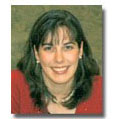

|


"O taste and see that the LORD is good: blessed is the man that trusteth in him."
Psalm 34:8
 Nearly three years ago, now, I was approached by the Jane Austen Centre about the possibility of creating a
cookbook full of period recipes to be sold in their giftshop. It was a marvelous opportunity to merge my love of cooking and food with the Regency era and Jane Austen's works in particular, and I jumped at the chance.
Nearly three years ago, now, I was approached by the Jane Austen Centre about the possibility of creating a
cookbook full of period recipes to be sold in their giftshop. It was a marvelous opportunity to merge my love of cooking and food with the Regency era and Jane Austen's works in particular, and I jumped at the chance.
Months were spent studying food in Austen's work; researching and collecting period recipes and collating all this information into a workable table of contents. Finally, it was time to begin cooking! Suddenly, I had a whole new appreciation for all those generations of women who have slaved over hot stoves, preparing meals for their families.
As mistress of an ever growing household, the procuring, preparation and serving of
meals would have taken an enormous amount of time and effort. Even if, like Mrs. Bennet,
she and her daughters were not directly involved in the meal preparations, Mrs. Austen
would have supervised the tasks involved in providing for her family. Later in life, her
future daughter-in-law, Martha Lloyd, took over many of the household duties that were
once Mrs. Austen's province. Martha's household book, a collection of favorite recipes
and household hints, gives rare insight in the lives of not only the Austens, but also their
friends and neighbors, once known only through Jane's own observations to her sister.
In this book you will find period recipes for foods that Jane Austen was familiar with.
Although the preparation instructions have been updated for modern cooks, the resulting
dishes look and taste much like they would have 200 years ago during the Regency. The
recipes have been named after people and characters that either have a direct relation to
the particular food or have a personality evocative of that dish.
When instructions such as, "whisk it up for a full hour", are given, I am once again
grateful for my electric mixer, food processor, blender, oven and refrigerator--all those
things we take for granted so often that period cooks would have given their right
(probably whisking) arm for.
I learned to cook using my mother's, and her mother's before her, 1950 copy of Betty
Crocker's Illustrated Cookbook. When I married, my grandmother purchased a copy for
me. It is to this invaluable book that I have turned to, when stumped by recipes calling
for a "quick oven" and other suggestions which would have been utterly familiar to cooks
of the time.
Though 200 years separate the publications of The Art of Cookery Made Plain and Easy
and Betty's Illustrated Cookbook , both are designed for the "ignorant and unlearned" and
are filled with many of the same recipes for easy to prepare, deliciously filling food. One
of the biggest surprises to me in creating this cookbook was the ease of preparing the
period recipes in their given format, once a few basic assumptions had been made. I was
also surprised to find nearly all of the ingredients used in this book at my local market.
Such a variety in one place, in the dead of winter, Jane Austen could only have dreamed
about.
Some ingredients that I never would otherwise have tried, such as mace, were deliciously
unexpected, and vegetables that I had not previously served became family favorites.
Responses from guests who tried various recipes have been universally enthusiastic. I
was most often met with shock once the age of the recipe was made known. Many people
have the idea that period food is dull, over cooked and unappetizing. This experiment has
destroyed that assumption.
No attempt has been made to adjust these recipes to modern calorie conscious cooking
methods. Like Mrs. Norris, I was amazed at the quantity of butter and eggs regularly
consumed but therein may lie the secret to why the food was so delicious. It was clearly
a different time when hard work was expected, but well paid for in the large meals that
were the reward. Dieting for the sake of the figure (vs. health) had not yet come into
vogue--it is no wonder that even men wore corsets!
Many of the plates and cups used in this book are reproductions of pieces made by the
Josiah Spode Company in the early 1800's. For these and the other props and accessories
used, I am deeply grateful to the many family members who allowed me to freely raid
their cupboards for period looking pieces. Thanks are especially due to my mother, Brenda
Sauer, for her continual loans of necessary items, and Douglas Sauer, who allowed me free
use of his extensive collection of period glass, silverware and hearthside toaster.
To my family, who put up with a month of meals, taste testings, scoldings (Don't eat
that! It hasn't been photographed!) and oddly timed historical food facts, I couldn't have
done this without you. To Kent, my chief food critic, photographer, husband and friend,
thank you. Most of all, special thanks to David Baldock, at the Jane Austen Centre, for
starting me off on this fascinating adventure.

Laura Boyle is fascinated by all aspects of Jane Austen's life. She is the proprietor of Austenation: Regency Accessories, creating custom hats, bonnets, reticules and more for customers around the globe. Cooking with Jane Austen and Friends is her first book. Her greatest joy is the time she is able to spend in her home with her family (1 amazing husband, 3 adorable children and a very strange dog.)
|
|
|
|





